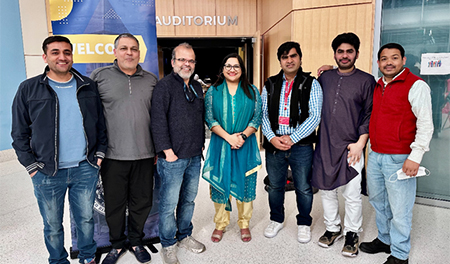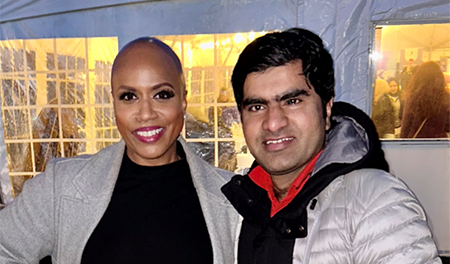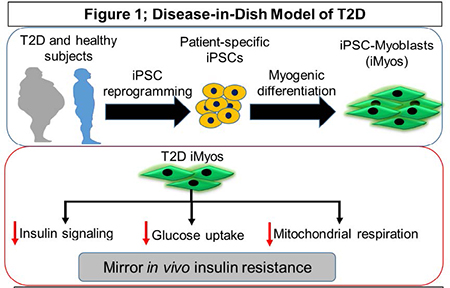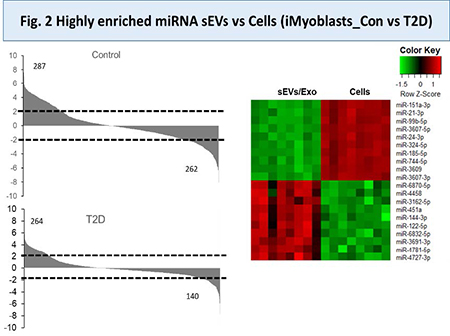海外留学助成 中間近況報告
2022年度留学助成(2023年 中間近況報告)
【留学先研究機関】
Joslin Diabetes Center, Harvard Medical School
[Elucidation of insulin signaling defects in muscle of type 2 diabetes (T2D) using T2D patients’ iPS-derived myoblasts]
First of all, I would like to thanks to Manpei Suzuki Diabetes Foundation for the generous support and opportunity to study abroad. I am enjoying my personal as well research life in USA. I have lot of fun during one year of fellowship. I had a chance to attend Joslin Retreat 2022 and was lucky to be the recipient of “Most Enthusiastic Award”. Beside research, I had a chance to meet Mayor of Cambridge, Ms. Sumbul Siddiqui at Ramadan Iftar dinner and also met with Congress woman Ayanna Pressley at Boston Iftar dinner.


I joined Kahn lab at Joslin Diabetes Center, HMS, to study how T2D alters miRNA profile. Exosomes and/or exosomal miRNAs are reported to be involved in the regulation of several biological processes involving hyperglycemia, insulin secretion, obesity, lipid toxicity, immune cells characterizations and others. Most cells in the human body can secrete exosomes containing microRNA (miRNA) and these exosomes carrying miRNA are transferred to target cells/tissue through blood, where they can promote or inhibit expressions of various mRNA. How T2D alters miRNA remained unknown. Previous reports investigated associations between circulating miRNAs and hyperglycemia in obesity. I aimed to investigate how T2D alters miRNA profile. I learned new techniques during first year of stay at Kahn lab. I learned several new techniques including exosome isolation, miRNA profiling, iPS cell culture, myoblast culture etc. I have also performed HTGedge seq analysis to profile miRNA in T2D iMyos. My initial results show that T2D do not alters number of sEV/Exo but significantly alters exosomal miRNA versus cellular miRNA (Fig. 2). These altered miRNA could serve as biomarker or pathological factors in the pathogenesis of T2D. I am moving forward to understand insulin signaling defects in T2D iMyos and to explore how miRNA contribute to the development of insulin resistance or insulin signaling defects in T2D iMyos. Dysregulation of miRNAs is a hallmark of various human diseases including obesity and diabetes. How exosomal miRNA are altered in T2D patients or in plasma of patient after weight loss, remain unknown. I am also interested to identify the exosomal miRNA signature associated with obesity and specifically after weight loss. In future, my work will focus on how exogenous stimuli produce insulin resistance in T2D iMyos. My work will demonstrate a unique disease-in-a-dish model of T2D in culture that exhibit multiple defects mirroring human muscle in vivo, including altered insulin signaling, decreased insulin-stimulated glucose uptake, and reduced mitochondrial oxidation. This is very efficient tool to study molecular changes using human primary tissues than murine model. As translational research is warranted, my study will translate basic research into translational research and it will help in understanding signaling defects in human skeletal muscle of T2D patients.






 HOME
HOME お知らせ
お知らせ お問い合わせ
お問い合わせ ENGLISH
ENGLISH

